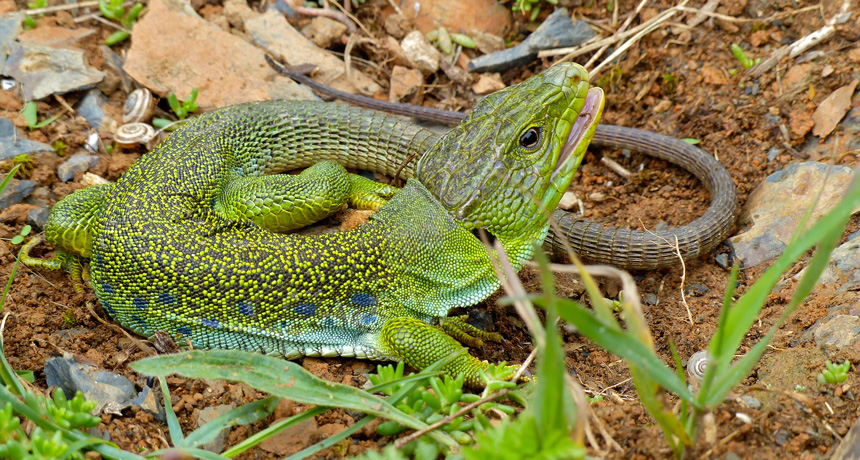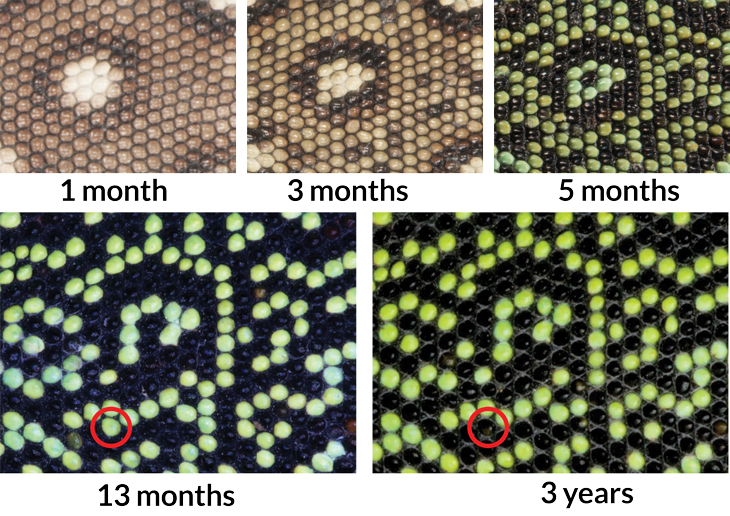The scales of the ocellated lizard are surprisingly coordinated
Lizard grows into its flashy skin using a computer-like process

SPECKLED SKIN The green and black spots on the back of an ocellated lizard are arranged according to the rules of a cellular automaton, a concept from computer science. Scales flip colors depending on the colors of their neighbors.
Juan Lacruz/Wikimedia commons (CC BY-SA 2.0)






